If the used car market has taught us anything is that cheap-to-buy doesn’t mean that it’ll be cheap to run. Or to put it in lore “There’s nothing more expensive than a cheap Mercedes”. Are these people right? Or do you think that you’ve owned something that’s more expensive to run?
eBay is practically crawling with examples of old Mercedes that are ready to very efficiently tear a Germanic hole in your wallet. Take this beautiful S55 AMG, for example. Its 9 years old and has almost 105,000 miles on the clock. There were a couple of S-classes higher up the ladder in case that 493 HP supercharged V8 was simply too plebeian for your taste; but if we’re honest, this is on its own merits a fabulous car–and thanks to the wonders of depreciation, quite cheap at a fiver under $20,000.
That’s quite a step down from the original $100,000+ price tag. Sadly for all of us that dream of owning such a comfortable and powerful barge, the maintenance prices haven’t come down. If anything, with its expensive parts and limited production numbers, they have gone up. A $3,000/quarter budget may not be completely used up every quarter, but you’ll be glad it’s there when the Active Body Control module decides passive is the way to go, or if the crankshaft position sensor decides it would much rather be a decorative item.
Of course, this isn’t limited to expensive cars with a horrible case of depreciation and exotic cars. Normal cars can also get very expensive, even if they’re taken care of properly. Just ask any person who bought a 1997-2002 Honda Accord or a 1998-2003 Honda Odyssey only to find out that the automatic gearbox was made out of twigs and Elmer’s glue. Or someone with an early 2.2-liter Chrysler Minivan that decided a family road trip would be the perfect time to throw a rod. And really, any car can become a money pit if you’re tasked with correcting a lifetime of skipped and skimped maintenance.
What was the car that stiffed you out of the most cash for repairs? The one that seemed to not be satisfied until your parts supplier and mechanic could afford to buy those luxury summer homes in France?





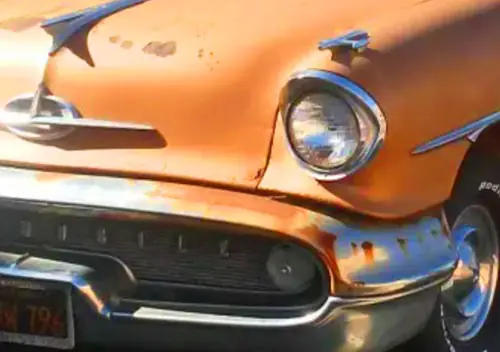
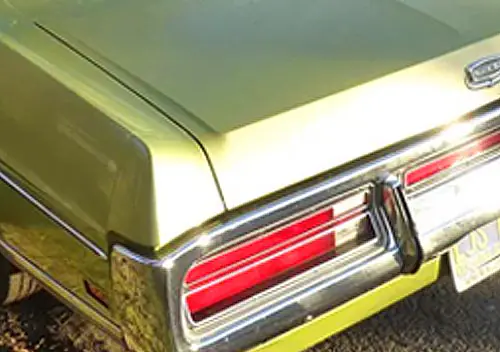


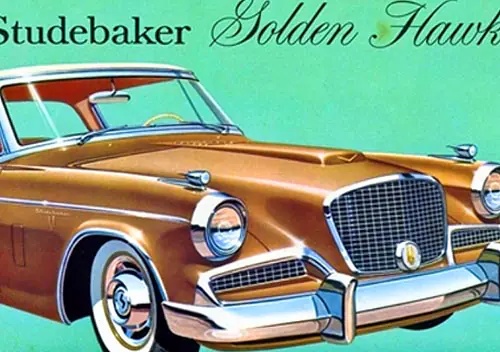
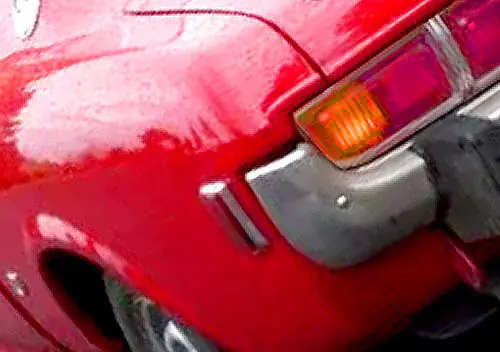

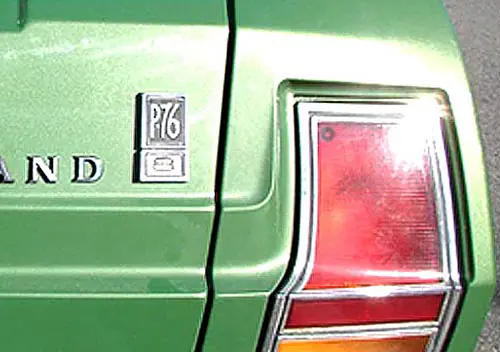
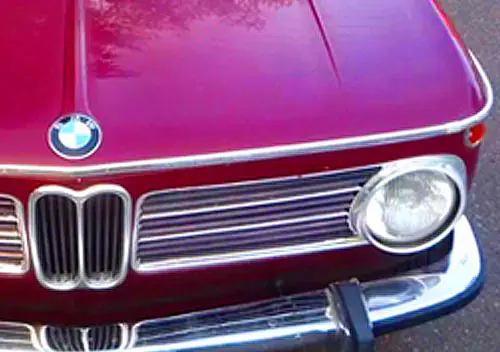
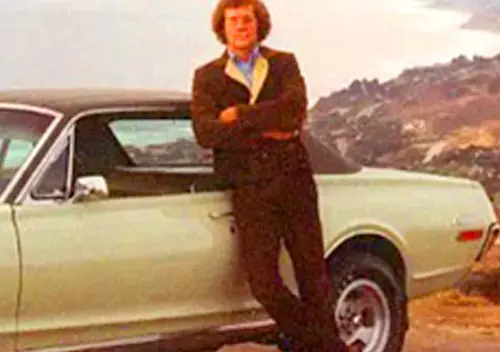

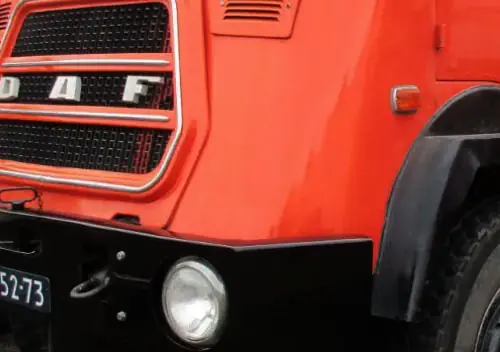
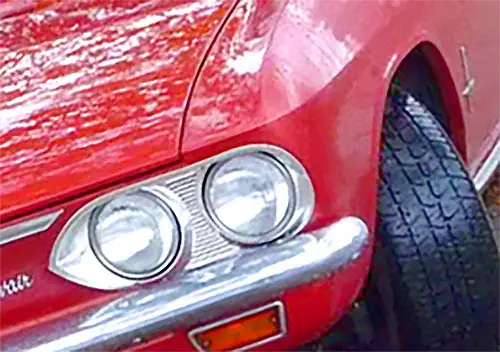
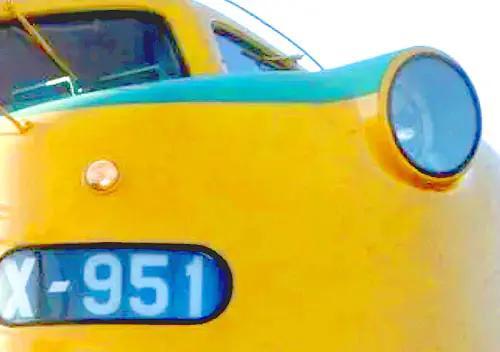

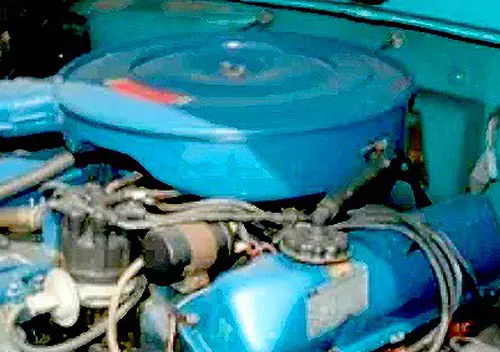



The most maintenance-intensive car I’ve been personally responsible for the upkeep of would easily be my wife’s 2000 Olds Alero. It its later years (i.e. the entire time I knew it) a vast variety and number of problems exhibited themselves. However, it didn’t end up being all that expensive, given that I did a lot of the work myself, or with the help of an acquaintance who did mechanic work on the side. If I had all the work done at the dealer, or even at an independent mechanic who had to maintain a physical location, it would have gone over the value of the car very quickly.
The worst I’ve had close acquaintance with would be either my Dad’s ’86 Audi 5000S or a friend’s ’02 Mercedes CLK320. Electrical failures galore on both cars, plus some mechanical odds and ends. Both of them make strong arguments against buying used German cars. (Though to be fair that CLK320 is now at 211,000 miles and counting with no major mechanical failures.)
Oh, the most expensive car I’ve owned in terms of purchase price (to me) was my ’03 Marauder. $20,400 in 2006. (~35K new in 2003)
Most expensive in terms of outright sticker price? ’96 Lincoln Mark VIII, just over $40K in 1996 dollars. (I paid $8600 in 2004.)
Most expensive, adjusted for inflation? ’88 Volvo 780. $37800 in 1988 dollars, $74500 adjusted for inflation! (I paid $1800 in 2014.)
Depreciation is your friend! It’s those upkeep costs that kill you.
Origin MSRP on my ’78 Volare is $3899, and book value now is $3360.
Between dollar and Volare, I wonder which wins at holding the value.
Somehow I just can’t imagine accountants back in ’78 recommending buying a Volare as a hedge against inflation.
A colleague had one of those as a company car. After driving it, I told him that while free has a lot to recommend it, if that car was mine, I’d never check, change or add oil to it.
Definitely not for that.
But I remember whose dad here was an accountant and bought a 1980 Dodge Challenger. He could do so in 1978 too. Anyway that’s from accountants’ choice on cars.
One of the reasons my mom and I don’t keep cars into older age and higher mileage is to avoid the increased chances of costly repairs that come with age and high mileage. That being said, major expenses can come early on in a car’s life.
I’ve only owned two cars and haven’t had major problems with either. My mom had a few issues on her 2007 BMW X3, which she owned from 2010-2013, but everything was covered under the certified pre-owned warranty. Her 1999 Jeep Grand Cherokee had a recurring issue with the rotors. It was more the headache of having the same thing go wrong 5+ times than the actual cost, which wasn’t huge bucks to repair.
If we’re talking Most Expensive Car In Terms Of Sticker Price, then mine was my 2004 Toyota Highlander. When my mom purchased it new, it came fully loaded and stickered around $37K. Adjusted for inflation, that comes out to about $46,000 in todays dollars. The MSRP of my 2010 Acura TSX V6 was $35,660 ($38,219 in 2015 $) when new; I bought it in 2012 for about 2/3 of that.
Interestingly enough, accounting for inflation, the Highlander was the most expensive car my mom ever bought, even more so than her Bimmer and Mercedes. Her 2013 GLK’s sticker was $45K and some change, but we were able to negotiate it down to a more attractive number.
Goodness, has inflation really increased that much since 2004?
I won’t own a newer car. Give me an older luxury car any day.
My “nicest” car is a 2001 Audi A6. I bought it a couple of years ago with just under 100k miles. It now has 155k (I drive 80 miles round trip to work every day). I had the Timing Belt/Water Pump replacement done (preventative service), and had one sensor go out that I had replaced. Other than that, everything else has been fit and finish related (None a big deal). It’s a nice car, and it’s not too bad to upkeep.
I will disagree with Brendan (Sort of), though. I think that an older car can be fine as long as it was well cared for. Highway miles don’t add up as quickly as bad owners do. We used to have a 1989 New Yorker with 269k miles. I now own a 1995 LeSabre with 220k miles that I use when we’re going separate directions (The Audi won’t split apart), and four pickup trucks- the newest one is a 1995. It’s not too bad. I’ll take the money savings.
Of course, I can do my own basic maintenance (Radiator on the Buick, ignition lock cylinders on two trucks, and brakes). If you can do that, you’ll be fine.
If you can’t change your own oil, don’t buy an Audi. You have to be able to wrench a little, but my God, the experience is worth it!
I agree with you on the whole that a older car can be fine if kept up and if it is easy to work on
The Lesabre is a fine example of that as the biggest issues that the 3800 V6 will have is lower intake gasket issues and that is a one time and done due to the new metal framed gaskets GM has come out with(why they did not use this type instead of plastic in the first place I don’t know) and upper intake plenum cracking. The lower intake gasket takes me about 5 hours to do(I have done many of them) and the upper intake plenum about 30 mins at most. Other maintenance is easy due to ample room under the hood.
Other cars it is not so easy to work on. I wrench on all my own cars but the 1999 Firebird I own is the biggest cluster f%^k to work on. It needs plugs and wires and I dread doing.
As for the A6, Have you done many repairs to it yet? Wait until you try replacing the alternator. You have to take the bumper off then unlock this bolt and swing the now bumperless front end open like a gate to get access to this. I replaced the one on my neighbor’s 2001 A6 and it was something i never want to repeat.
Plastic is for weight savings, there is always MPG to worry about thanks to EPA.
Some ideas appear to be brilliant in the first place, but something wrong would be figured out later. EPA makes it worse.
LeSabre looks more French and upscale with upper-case S 🙂
No alternator yet. I haven’t removed the bumper yet, but I know the mechanic did to replace the timing belt. I basically do only oil and brakes on the Audi. But, still 55k relatively trouble-free miles isn’t too bad.
I absolutely love the LeSabre. It was the first car that I bought with my own money from my own business. It got me through some tough times in High School and beyond. It’s more a friend than a car.
I did the radiator myself, and had a shop install a used transmission. I know that I’ve spent $1400 on a $700 car, but it means a lot to me. I’ve always thought that you’ve done well on a car purchase if you’d do it again. On the Buick, I did it again. I don’t drive it much, but I actually like it more than the Audi. Even though the Audi has always been my dream car, the Buick is just “special”.
I dread the day that something major happens to the Audi, but so far, knock on wood….
I love older luxury cars, though. The Buick is comfortable, well appointed, and drives like a dream. And, I get 28 MPG. Why would I want a buzzy little Civic or Corolla? I could instead be driving a couch!
What!? Who says that 20 year old LeSabre’s aren’t upscale? Does this look plain and boring to you? 😉
I have a 1995 Park Avenue Ultra. For my 40 minute commute, it is so comfortable, and it is quick for what it is. Mid 20s mpg. $3,000 with 67,000 miles. And it has dark red leather! I never thought I’d ever own anything like it, but bought it for the price and condition when I was in a tight spot, and the car I once laughed at the thought of owning has totally won me over.
If not for Ultra and 67,000 miles, I would think you are my landlord. His Ford Escape just recently gave up.
The car has its quirks, like a whistling whine at certain rpms that I have told myself is the supercharger. I’ve never heard that sound from an engine before, but always owned trucks and v8 cars (camaros, impalas,etc.). If anyone knows what else the sound might be, I’d like to know in case it’s a problem I need to fix.
My long lost twin!
At the time, we had an Impala that I absolutely hated. I wanted a Taurus, but it sold before I could see it. Our only car was leaving town, so $700 later, I owned a Buick. I bought it at 9:30 PM, so I couldn’t have told you the colors until the next day. At least the interior is red- every interior’s better in red.
I fell in love the first time that I drove it. Dynaride is an awesome creation!
I just hope the whistling whine doesn’t indicate loss of cylinder pressure. 3800 Series I has lower intake gasket issue and I am not sure if GM spent a bit more on Superchagrer for that part. For the greater torque, occurrence of transmission failure is higher even though it’s heavy duty version. ( But V8 is similar too. There are more transmission rebuilt Chrysler 318/360 V8 cars than those with Slant Six )
It’s good the clear coat didn’t peel off. Mine does ( but more scratched off for snow ) And I sprayed some model clear coat later.
Dynaride is good for potholes, and it’s not computer controlled.
I might check that out. I was under the impression that it was the series II 3800 that had the intake issues. One of the reasons I bought it was because I had read that the series I was supposed to be mostly worry-free, but I am new to the Buick world. My grandfather would own nothing other than Buicks, however! I just hope it gives me some trouble-free milage. I’ve put another 12,000 on it since I bought it so far.
I drove my 1997 z28 six speed today, and it rained. I quickly remembered why I decided it could not be my daily driver anymore. As fun as that car is on dry pavement, it is a white-knuckle experience if there is any standing water on the road surface. Complete opposite of the Buick. The Buick might be doing the same thing as the Camaro, but you sure don’t feel it like in the Camaro.
Weight reduction has a little bit more negative impact on Series II engines, and Series I has less weight reduction effect. But Buick in general they have common and simple design language and I think they set a good role model for current Lexus.
In a project today I mentioned LeSabre’s front macpherson suspension, it’s good but the limit is very obvious: it will never be exciting. But it’s reliable and always capable of getting the job done right.
Check your supercharger oil! It can get sucked into the intake through the seals and get very low (and there is not much in there to start with). Be forewarned, the smell is awful (while rebuilding a supercharger awhile back, I kept checking my shoes for cat poo and finally figured out that I was smelling the oil).
Also, the rear bearings inside the supercharger are the same ones as GM used to use on the rear of their alternators for 25 years or so – needle bearings inside a sealed steel case. The grease only goes for so long and there is no way to lube it w/o disassembling the supercharger. Easiest way to pop the bearings out of the housing is to drill & tap hole to the rear of the cavity and then pump grease in – this pops the bearings right out.
Thanks! And you were right about the intake manifold. Leaking. Hadn’t really noticed because its usually not parked on pavement. Turns out there is also a slight water pump leak, which I know won’t stay slight for long, so now the question is, do I wrench up myself or take it to my very good local mechanic? I used to do almost all of my own work, but am reaching an age where I’d rather write a check on some jobs, and my current house doesn’t have a good place to work like I have at the farm.
The highest amount of money I ever paid for a car is $9300 in 2012, for my 2002 Mustang GT convertible.
My 1966 Impala hardtop is insured for 20k however.
I had a 1991 Dodge Shadow with the 2.2L and 5-speed that I drove from 1999 to 2002. I guess it wasn’t terrible, but there were enough issues to make the experience frustrating. Just kind of nickel and dimed me, especially as a low-income college student. And I think it only had about 90,000 miles on the odometer when I sold it to my brother, who drove it for a year (into the ground) and gave it to someone to try to breathe life into it. I think they gave up and junked it.
I loved the functionality of the car, but the reliability left me longing for something more durable. I traded it in on a very boring but incredibly well-built 1998 Protégé, which I drove for over 3 years until I could purchase my first new car. I happen to know it is still going strong at nearly 200,000 miles, which isn’t too surprising to me.
I had a ’91-ish Sedan deVille once. It was Pop’s car, and when he went to trade it in, they offered him $2000. I offered $2050 🙂
Because Cadillac owners don’t need anything as plebeian as a temperature gauge, I had no idea the thermostat was stuck open. Thermostats are cheap, but when they stick open, the ECU makes the car run rich, and it ruined the cat. That was a $500 job. I sold the car shortly thereafter for $2000.
Same problem with my ’81 Escort; I was too inexperienced or clueless to notice that it ran too hot from the beginning, in the top 3rd or so of the gauge arc (not in the danger zone). Much later I found out, after engine damage, that this was abnormal, and the thermostat was defective. Its supplier must’ve been the lowest bidder. Should’ve bought from Japanese disciples of Deming.
So when my ’88 Accord’s high-mileage thermostat finally seized, the temp gauge did its job & I shut off in time.
92 Dodge Van. Ate transmissions, fuel sending units and ignition switches.
Then came back to bite me from the grave. Engine blew on the Ma Pike.
I mailed the title (my mistake) to the garage the state police had it towed to.
Told em to junk it.
They never turned it in, repaired it, drove it, abandoned it. Tow company sent a payment demand letter and it cost me hundreds to settle.
Our state of Washington has a Report of Sale form that you can (are supposed to) fill in and send to the state if you sell to a private party. That gets you off the hook if the new owner turns out to be that sort of a wastrel.
$510 87 Caprice Estate from Long Island I used from 07-09. It sure did have various issues. The family’s 95 Voyager cost more overall since it was bought new and was owned for about 18 years all while hardly deferring any mantinence.
Nothing terribly significant over time, but two vehicles stand out for fairly immediate failures that I didn’t notice before I bought them. One was a 1995 Chevy C1500 pickup; it had a slight noise from the transmission that I didn’t think anything of. Checked the oil level in it to find that it was about a half inch low, and filled it up with the recommended GM Syncromesh fluid. A couple months later, it suffered input shaft bearing failure. Turns out, the bearings run dry in those transmissions with even a slight loss of fluid. Had it rebuilt and ran it for another 60k miles with no issues, though unbeknownst to me the intake gasket went towards the end, and my friend (who I sold it to) had to replace it after he bought it.
Second was a 1998 Chevy Prizm. While I was checking it over, I asked the owner if it used any oil, and he said “about half a quart between oil changes”. A couple weeks after buying it, we took it on a trip out east, and I decided to check the oil level while getting gas. The dipstick was dry, ended up being 2 quarts low. Further monitoring showed that it was using 1/2 to 1 1/2 quarts of oil per tank of gas! Took it in, was told it would be $2200 to repair, and that it was likely to recur even if the repairs were done. Come to find out, it’s a common problem with those engines. Drove it as it was for another 3 years, other than fouling O2 sensors and the cat (wonder why!) it ran well. Never saw any blue smoke. Amazingly, I didn’t have any trouble selling it even with disclosing the issue, though I did lose some money on it.
NOTHING costs more than a fifty-buck-truck. NOTHING. Trust me on this one. I did it twice.
Maybe a free Cavalier too.
Free trucks cost more.
It’s like a payment plan, basically. My 1987 Chevrolet will always need something. It’s kind of like a bi-monthly car payment.
Don’t take a Chevrolet that was sitting next to a field for nine years and make it a project.
I paid $1,750 for the ’95 F150 4WD I wrote about here (link), and while the total expenditure in (mostly junkyard) parts wasn’t horrible (less than $1K), I spent more time under it than in the cab… The diesel ’99 F250 4WD that succeeded it has dinged me about $1,200 so far (wheel cylinder blew in traffic downtown, ended up redoing all four rotors & pads), but has otherwise been reliable.
My current car and the one that preceded it (a 97 Civic and a 92 Integra) ate a lot of money in repairs but that was mainly due to my very bad care. The Integra broke a motor mount at the engine block and the Civic has a very “ragged” front end/suspension. I suspect that if I was a bit more….reasonable (?) my cars wouldn’t be so expensive.
Most I’ve paid for a brand new car? $10,000 for my 89 Civic DX sedan.
Easily my “beloved” 1979 Honda Accord. Cylinder head gasket, cylinder head and collateral engine damage, transmission synchronizers all failed with less than 40K miles. Even a Honda automatic transmission from 1997-2002 could manage better than that.
I took a real financial hit when I dumped it after 3 years of misery, but it would have been worse to keep it and live in denial.
My 1975 VW Dasher that I’ve written about here before. It was a miserable excuse for personal transportation that was made out of potmetal and used papyrus scrolls. If it hadn’t been for the fact that I needed to recoup some equity from it, it would have been pushed into a quarry. I loathed that car, and still won’t get within spitting distance of any VW/Audi product.
My 2001 Pontiac Aztek bought with 5000 miles on it was the most expensive car I have ever owned,and easily the vehicle that cost me the most for repairs.
Another poster here said it best. Something along the line of
” I have spent so much time with my dealership service writer I almost invited him to my families Thanksgiving dinner”
That about sums it up in my case.
By far my 1984 Buick Century Limited was one of the most expensive. 3 engine rebuilds in 2 years, of which Buick paid for only one of them. I swore I would never buy another Buick, but I loved so much about that car that I swung for a 1987 with the 3.8 V-6 and it was a sweetheart. 200,000 miles and I only replaced the catalytic converter once and a fuel injector twice. Other than that it was one of the best cars I ever owned.
As far as my parents are concerned, Mom had a 1983 Jaguar XJ-6 that was an absolute nightmare. When her 1979 Riviera was totaled, my folks went out and bought a 2 year old XJ-6 not knowing the Lucas electrical system would haunt that car with issues. Plus any time it needed something i.e. steering rack, shock absorbers, it was always a mammoth job to replace and was ultra expensive. (At least according to the local Jaguar dealer). Every summer that car would plague us with overheating problems. One day I was driving my grandparents in a funeral procession and somehow the battery cable melted and caught fire. There was smoke and flames, but the car did not totally get engulfed in flames and was saved (much to Dad’s chagrin!)
Adjusted for inflation: My 1975 Ford Thunderbird. I’ve posted the bill of sale, which showed a sticker of around $10,000 in 1975.
Highest Sticker: It’s a tie between my 1996 Thunderbird and 2014 Passat. This reflects the disposable income of a bachelor.
Highest Repair Expenses: A 1963 Ford Galaxie, but it’s not like I’m driving it daily or planning to sell it before I’m 90.
The worst vehicle I’ve owned- hands down- is a 1997 E350 box van. I paid $1700 for it, and sold it a year later for $800. I lost over $2500 in parts on it that year (After factoring the $800 back), and was only able to drive it for 800 miles total. I did five collection events (E-Waste recycling) with it, and broke down at the side of the road on four of them.
I replaced the shifter piece to eliminate slop (Common on Fords of the era) twice. I gave up after the second one and used firewood wheel chocks. I replaced four back tires right before the truck died (Used, at least), and serviced the radiator, the radio (Wiring problem), the entire rear brake system, the starter interlock, a brake line, the fuel filler neck, and fell through the rear bumper due to rust.
I still had a rusted out death trap that was a pile of misery. I hate that truck to this day!
Most expensive total cost of ownership: 2003 Mazda MPV. Just too many issues to note them all, but transmission problems, oil leaks, major rust, and poor (also expensive) dealer service top the list. Depreciation was ugly when traded too.
Most expensive first cost car (and even paid much less than sticker): 2007 Volvo V70. Still have it, and notable here as its operating cost so far has been very low (I do basic maintenance myself).
Major rust in a 2003 MPV? Wow, I never heard of that before.
Where was the vehicle rusting? And was it major in the undercarriage?
Very bad rust around rear wheel arches (paint started bubbling after about a year and a half and there was no stopping it from there). Also rust on the lower part of the doors (all of them to some degree). Yes, undercarriage too.
Most cars have improved a lot with regard to corrosion, at least from my experiences. And we take pretty meticulous care of all our cars, so it was all very irritating.
They still do, only newer.
1977 Mercedes 6.9. My boss gave it to me for free. He had babied it and stopped driving it 10 years prior. It was shipped to me and it was beautiful and showroom…looking,
It drove like a skateboard, the hydro-pneumatic suspension needed redoing, The transmission died…a litany of things. This wasn’t my first Mercedes mind you so I was not surprised by costs but this one wrung me out. All in all my free 6.9 cost me around $50K I drove it for 5 years (mostly to my mechanic) who told me this was the worst Mercedes he has ever worked on and suggested it was probably a lemon. I eventually sold it for $4K to a gentleman out of state, I drove it to the shipper, left it and never looked back. Within weeks I got an email from the buyer who informed he it was totaled in an accident but he was happy to have gotten $10K for it through insurance. That stung the most.
$50,000! Wow, that car took you for a ride!
Thank god my dad taught me how to wrench on my own vehicles since I was a kid.
I would gladly have taken the at Merc from you and spent WAY less than 50k. Those old Mercs are almost as easy to work on as a mid 60’s American car. Vacuum errythang lol
Our 1992 325i fits in this category. Purchased used in 1999 for about the same price as a new Civic, it became a money pit, and later an unreliable money pit. This does not mean was not the “Ultimate Driving Machine”. It was a joy to drive, just not to repair.
My most expensive was the most sensible & reliable.
’08 Prius, bought right off the lot for 21K, when gas was over $4.
Has never disappointed & starts all winter, down to 0-degrees. Besides oil changes & tire rotations, one single repair: water pump for $400.
Who knows how long the hybrid battery will run? So far,
so good, but $3,000 to replace with a new one.
While its sticker price wasn’t the most expensive, our 1995 Ford Escort had an appetite for automatic transaxles. I should have known there was trouble when the trans shop had to rebuild it twice, then it blew up again a few years later and a Ford dealer took three attempts to get it working right, although they did eat the costs of everything but the estimate for the first trip in. Finally we saw the light and swapped in a used unit that ran strong until we junked it in in 2012.
The most expensive purchase was our only new vehicle, a 1993 Ford Ranger long bed with the 3.0L V6, but that lasted 9 years with nothing but wear items.
Leaving my 1971 Alfa Spider out of the equation ( the driver’s door is probably the last remaining original part ) my wife’s 98 328i probably holds the record. It averages $1500 a year for something even though it only has 67,000 miles on it. She drives it regularly but obviously not very far. It’s in beautiful condition but it just keeps nibbling. Always wants -something.
Most expensive (out the door) was my 2013 MB E350 BlueTec.
I’d have to say never to having a car cost me money. My 68 Cougar in 1969 was/is a fine car. From 72-77 I had the use of various company cars: VW Squareback, Audi Fox, Chevy Nova and Plymouth Duster. In 1980 I leased a Honda Civic wagon which was fine until two cam lobes seemed to go south and I dumped the car for $1600 in 1986. The $1600 paid for my 289 rebuild while I bought a 1986 Mazda 626 at $9K. Absolutely fabulous car all the way to 375,000 miles and one cylinder head.
Bought a 2004 Ford Focus 5 speed 2.3L at $15K and I can’t complain. Bonus was a friend giving me a 1991 Mazda 626 with 165,000 miles because he had no need for it. Naturally it has been another fabulous Mazda. So I have bought three cars in my life and have not had one major costly repair especially since I do my own anyway.
I guess there are three ways to look at it..
The most expensive car that we purchased would be the Touareg, somewhere around $50k. (We don’t have it anymore)
https://www.curbsideclassic.com/cars-of-a-lifetime/coal-2012-volkswagen-touareg-tdi-lux-so-far-so-good/
The highest absolute sticker price but purchased used would be the 911, sticker was somewhere in the high $70k’s (but used purchase price about a third of that and screaming bargain in my opinion)
https://www.curbsideclassic.com/cars-of-a-lifetime/coal-2002-porsche-carrera-my-daily-driver-is-a-keeper/
The most expensive on a day to day basis with repairs and time spent performing the repairs over a relatively short period of time (even for me) was most likely the Saab, at least pretty much all of the money expended was recouped at sale.
https://www.curbsideclassic.com/cars-of-a-lifetime/coal-2003-saab-9-3-2-0t-scratching-an-itch/
I don’t think there is anything wrong with purchasing a car such as the featured one, as long as
A) You go into it eyes wide open
B) You have money, time, and expertise to fix any faults
C) You have an exit strategy all planned out just in case – And yes that includes being prepared to view (and be able to afford) the purchase price as disposable cash with the possibility of no return, pretty much the same strategy you need to play the roulette wheel in Vegas…
+1 ABC
considering ABC, I prefer downgrading to DDR level for lawn mower grade technology. ( maybe there are few limited advantages for coming from East Germany over West one as shown in this one )
http://miami.craigslist.org/brw/cto/4853645943.html
It appears to be missing its accelerator pedal. Then again, that pedal is probably of limited use anyway in that car so no big loss… 🙂
Lawn mower speed, perhaps.
And I’m surprised how fast it was sold.
Most expensive purchase was the $3600 ’93 Aerostar in ’98. Probably spent about that much in maintenance over the next 10 years.
Most expensive sticker price is the ’95 Olds 98 I’m currently driving. Originally would have been about $27K. Depreciation (and rust) brought that down to $1200 last year.
Most costly in terms of time is pretty much a tie between the ’65 Chrysler and the ’74 Dart. The return on that investment is much better with the Chrysler, than it was with the Dodge.
Highest sticker new : 1993 Cadillac Fleetwood Brougham (about $40,000 in 1993)
Highest sticker in 2015 dollars : 1993 Cadillac Fleetwood Brougham, it’d be about $65000 in 2015 dollars.
Highest price paid : $3200 for 1987 Cadillac Brougham in 2004
Highest cost to maintain : 1987 Cadillac Brougham, endless issues with the vaccuum lines and eQJet sensors and the Olds 307.
Most car for the money : Hard one. The 1987 Brougham had by far the nicest interior components, accessories, and exterior trim. But the emissions controls were such a nightmare. The 1993 is $10K more in real dollars today (the ’87 stickered about $27K back then) but other than more supportive seats has a far cheaper interior. The Electra feels like the winner because despite the vinyl/cloth seats, it’s as big as the ’87, almost as big as the ’93, it still has lots of accessories, the second strongest engine of the bunch, and basically the same interior room as the Cadillacs, for what would be $27K in today’s dollars. With leather and a 60/40 bench it’d be a close thing indeed.
Oddly the cheapest (fingers crossed) of the 4 cars I owned has been the 1977 Buick Electra. Worst on gas, best on parts, easiest on DIY things.
And the also ran is my ’87 Ford LTD Crown Victoria. It had the quietest engine and the worst cornering. It was the cheapest purchase price and was about equal to the Electra in 2015 dollars, yet offered less in terms of power, interior space, wheelbase, or trunk space. Plus, the engine, while solid, was very difficult for a young kid to learn on, tight spaces that even the mechanic complained about on the 302/5.0
The *cheapest* vehicle I’ve owned was my ’69 F100, which I had for ~14 years and was in our family around ~42 years (link). I probably put less than $200 in it (not counting fuel, oil and maintenance items) in those 14 years. Of course, I only drove it 2-4,000 miles per year, but what miles it did see were often harsh ones.
My ’13 Beetle Convertible TDi (link) was probably the highest out-of-pocket $ car, but cost me no out-of-pocket expenses while I had it (it did have warranty issues, though).
Our ’12 VW Routan SEL (link) would easily win the highest sticker (~$42K), but we bought it with 8,000 miles and 1 year on the clock for just over half that. Talk about depreciation!
Highest repair expense would probably go to my ’00 New Beetle TDI (link), which required three $1,200 timing belt replacements during the 219,000 miles I owned it (from new), plus a number of quality-related issues not covered by the dealer. Came close to selling it several times, but once all the VW quality issues had been sorted, it actually was quite reliable from around 150K miles on. I sunk another $1,500 in it about a year before selling it in new tires and a complete suspension and exhaust replacement (with upgrades). Was a hoot to drive!
I bought my 1994 Dodge RAM2500 in 2001 for $14k+tax. Most expensive up-front cost of any vehicle I’ve owned. (I think my wife’s CR-V is about tied for that though.) I’d say it’s been very reliable, at least until recently. I do my own maintenance and most repairs so that has helped.
However, the transmission died about 3 weeks ago, at 417,000km on the odometer. I had it overhauled, which cost $2700+tax. I’ve had it back to the shop once and I’ll be taking it back again to complain because the lockup on the new torque converter is slipping BADLY. 🙁
Just a couple weeks before that the ignition switch fell apart. I had to hotwire the truck to get it home, and had a shop fix it because it happened the day before we were to go on vacation. That was another $500. So it’s only March and this year I’ve already spent $3500 on a truck that would maybe fetch $4000 if I chose to sell it.
In the past few years there have been several expensive parts that needed replacing (starter, alternator, fuel injectors, water pump). Did those jobs myself. Prior to that, the most expensive repairs were that the A/C failed two years in a row, each time costing $1000. That was about 7 years ago though.
However, the amount I’ve spent on my truck pales in comparison to the amount I’ve spent on one of my big old Chryslers over the 16 years I’ve owned it, completely discounting the many hours spent wrenching on it in the driveway and garage. That’s different though….
“However, the amount I’ve spent on my truck pales in comparison to the amount I’ve spent on one of my big old Chryslers over the 16 years I’ve owned it, completely discounting the many hours spent wrenching on it in the driveway and garage. That’s different though….”
Really ? care to elaborate a bit?
“Old” as in classic?
Or “Old” as in a 1998 model?
While it’s not the only C-body in the fleet, I was specifically referring to this one:
https://www.curbsideclassic.com/my-curbside-classic/my-curbside-classic-1966-chrysler-windsor/
Thanks Its all quite clear to me now.
I somehow missed that write up on your Windsor.
Nice car!
Highest absolute sticker: 94 Ford Club Wagon Chateau, at $29k new. I bought it at 1 yr old for 20k, which still ranks it as the most I have ever paid for a car.
The 63 Cad Fleetwood Sixty might have been the most expensive adjusted for inflation. It was about a $6500 to $7k car in 1963. It is also the only one where I (involuntarily) doubled my $400 investment in 6 months (in 1979).
The high mile 99 Town & Country is the car I got most upside down in. I grew to like it so much that I fixed stuff I shouldn’t have fixed, then had to do CV joints. When the tranny let go, I gave it away (and it is still being driven.)
My ’69 VW Beetle which was constantly breaking down during my senior year in high school. Damn if the engine didn’t drop a valve and punched a spark plug out of the cylinder head when I ready to go to college. It took ALL the spare cash I had to get the engine worked on. By the end of my second year in college, I saved enough money while working at school to get a replacement (’75 Toyota Corolla) which never failed me.
Since then, I have never considered a European brand on all my subsequent car purchases.
Other than my drag car, a 1975 VW Rabbit. Paid $500 for it and spent $2500 keeping it running before I really got pissed and junked it.
biggest PITA? 1966 Rover 2000. Second biggest…1971 Opel 1900 Sport Coupe. Third biggest…the current 2009 Accord V6. It is one of those that had the bad piston rings from the factory, and would shove oil and foul its back-side spark plugs like an old worn-out Chevy, usually going into gimp mode when we were on a road trip. When the car got over 60k miles on it the dealer installed new piston rings at no charge to us, and now the car acts like a Honda should. Apparently there was some kind of a paperwork thing between the dealers and the factory that 60K miles was the magic number so the factory would pay for the repair instead of the dealer.
My most expensive car thus far is my current one, a 2011 Chrysler 200 Limited. That is only because I paid cash for it ($13k private party), like I did my other two vehicles, which I paid less than $5k for each.
It’s been very reliable for the two years I’ve owned it. It’s been only maintenance items so far and it looks like it will stay that way for some time. The good thing is that it does not have a timing belt to worry about, something that’s seemingly unusual in a newer car.
My last two cars, a ’97 Concorde (owned for 3.5 years) and then an ’04 Intrepid (owned for four years) should have been expensive to own due to the reliability issues everyone seems to have with these cars, but I’ve been served very well by both of them. Again, nothing major. No repairs at all on the Intrepid and just an alternator on the Concorde.
I will say that the Intrepid I had did not have the troublesome 2.7L engine, but rather the more reliable 3.5L engine. It did have an appetite for brakes though, but that’s a maintenance item. A new engine or transmission is not.
Most expensive to buy was a Mk4 Cortina for £1500.I bought a set of tyres,exhaust and alternator but these can be considered normal wear and tear for 18 months driving.
Most expensive in repairs was my Sunbeam Rapier fastback.Cost £900,in 3 years I rebuilt the engine, had the auto box replaced,(Bryce correctly described the Borg Warner auto box as bio degradable)changed 3 head gaskets,new water pump,new indicator switch,new radiator,new alternator and battery,tyres,exhaust and fought a losing battle with the rust monster.I sold it for £25 running on 3 cylinders with 2 weeks MOT and tax left.
Compared to a lot of people I got off lightly and it did teach me a bit about mechanics and body work.
Most expensive cars I’ve owned as to purchase price? Our 2002 CR-V and my 2012 Impala LTZ. No repairs to either, other than maintenance, but the CR-V needed new front brake work – calipers.
Most expensive cars to own? Ha ha! Most every Chrysler product we’ve owned except for the 1990 Acclaim until our daughter got ahold of it! Doubt if I’ll ever buy another Chrysler product.
I suppose I’ll have to add my beloved 1964 Chevy Impala SS convertible I owned while in the service. Bought it for $800.00. Needed a new Powerglide right off the bat – $200.00. Needed the 283 rebuilt the following year – a buddy in the USAF rebuilt it for me, cost around $300? Don’t recall. Everything else was elective – tires, wheels, stereos, re-paint, suspension mods, gasoline – you name it. I couldn’t keep my hands off it, nor my rather thin wallet closed!
I remember figuring it out back then that my total investment in that car was something like $2,400 over 3 years, 3 months – June, 1970 – July, 1973.
Do I ever regret it? Not when I think it kept me away from dope and shady people, because I was always driving the thing! 100K in the time I owned it! However, it kept me away from girls, too – THAT part I have a few regrets, but the wait to meet the girl whom I would marry was well worth it!
That reminds me, Mr. Zackman. Did you see the photos that I posted to the Flickr Cohort a while back of a non-SS ’64 Impala in Goldwood Yellow? I immediatly thought of you when I saw that car, and I pulled over without any hesitation to take some photos. That car was absolutely beautiful.
I once owned a 1989 Audi 200. That’s the big turbo Quattro with the same body as the 5000. I bought it for $8k with about 120,000 on the clock. It was pretty much immaculate and appeared well cared for. I spent another $8k on it the following year, then another $8k the year after that.
It was an awesome car to drive. The combination of luxury, handling and speed made you feel like a god. It even smelled like a high end car.
After 2 years and about 30k miles I pulled the plug and bought a Durango. The Durango was largely trouble free for the 10 years I owned it, and I found I was able to focus on things other than how I was going to get to work in the morning.
TCO wise, my COAL that will be publishing Saturday has it nailed. It’s the only vehicle where maintenance has exceeded the purchase price, and the only vehicle where I’ve had to sell it for scrap value.. mainly out of sheer anger.
That said, our current family hauler is the most expensive from a purchase price, but so far has been worth every penny. 2009 Honda Odyssey EX-L, and honestly? I love the thing. We’ll keep it for 2-3 years, then buy a new one identical to this one.
1938 cadillac V16. It’s orignal engine, one of 500 built bit the bullet in the 1940s and someone put a Buick straight 8 in it. By the time I bought it the orignal engine was long gone and estimates were $40,000 for an original engine. The last owner put a chevy motor in it to get what was a junkyard car off his property. Now I’ve restored it, but I don’t pop the hood:). At least I can drive it without fear of breaking something. Most of these cars are in museums.
Congrats to you sir. Keep that Caddy rollin’! You should submit an article on it here. Sure I’m not the only one who would like to see pics.
Most expensive vehicle would be my ’11 H-D Road Glide Ultra @ $22k. Never have owned a money pit, every car I’ve owned and I’ve owned a lot of cars in the 36 years I’ve been terrorizing the streets of n.e. Ohio. Probably 95% have been Ford products and not a one has ever let me down. My biggest steaming pile was my Volvo 164E but I dumped that turd before it ate me out of house and home.
The most I ever paid for vehicle was 18k new for my 2004 Titan. That would be my most expensive vehicle in purchase costs. But it hasn’t needed any repairs yet, only normal fluid and filter changes. Only driving it about 1500k miles a years will do that. Except for a few recalls done free of charge. Probably my most expensive car in repairs was due to a combination of bad luck and a high performance engine rebuild. And removal and stock engine replacement later to resale car. And adding air conditioning. That would be my 73 Sport Bug. If left stock the bad luck still would have applied, but would have saved the expense of 2 engines. Wouldn’t have affected the 3 times the car was hit in 2 years, one time parked and twice stopped at red lights. Honorable mention would go to my 77 Rabbit that spun a rod bearing after extended 100 mph run on freeway (the GTI won), and replacement with a factory rebuilt long block along with a upgrade to a rebuilt 5 speed trans to replace 4 speed. Also got new $99.00 paint job and Scirocco seats. It was a great car until 35k miles later it was totaled when a 63 Dodge pu ran a stop sign, although his insurance added new engine and trans expenses into a check for the totaled VW.
My 1986 Pontiac 6000-STE was a money pit. Bought 13 years old in 1999 for $3500 to replace my 1976 Chevrolet Malibu Classic as college car. It had 90,000 miles on it, and was like new in appearance save for the mediocre respray. I had put all of 150 miles on it, before I blew up the fuel injected 2.8 six getting on the highway. Parked it and drove the ever-dependable 76 for a couple of weeks while I gathered funds to rebuild the engine. Rebuilt the engine, drove it for a bit before it needed struts and shocks, and springs, and it needed a steering rack, and it needed ball joints, and it needed tires, and it needed the radio fixed, and it needed the A/C system overhauled, and it needed speakers, and it needed an alternator, and it needed a water pump, and it needed cradle mounts, and it needed a headlight, and then I stupidly put it sideways into a ditch and bent the rocker panel up, after leaning it up onto a rock at a 45 degree angle, and a track bar, Oh and it needed a new distributor, and a couple of fuel injectors, sensors, CV axles, radiator, a battery, and probably a few other things I’m forgetting.
I sold it in 2001 for a paltry $900 and just a shade over 130,000 miles just to get rid of that fun driving, but money pit of a car and bought a high-miles 1995 Explorer (103,000 miles on it) that was an utterly stone reliable college car/commuter wagon – still have that Explorer to this day and 340,000 miles on its clock in 14 years,
I think for 6000 STE, it brings all the troubles of BMW on their way to be BMW competitor. I’m glad you didn’t pick the AWD Audi like version though, otherwise it could be as troublesome as an Audi and BMW.
I loved how that car rode and drove, but it was a pig on money especially for a broke college student. I imagine had it been taken better care of, or was used less as a short distance commuter car, it’d have been better, I was the second owner of it, and it left my care in better shape than when I got it.
The Explorer is still with me, despite my attempts to mangle the front end, but it too has recently become needy. It starting to make my 77 Chevelle seem as reliable as the proverbial anvil.
Most expensive was my gen-1 VW Scirocco. The price new wasn’t exorbitant, but as the years ticked by it was a maintenance money pit. Throughout much of the 1990’s it was costing me in the region of $1000 a year, a lot of money at the time especially considering I drove it on average only 10 000 km / 6000 miles a year.
I loved it so much I never considered getting rid of it. Fortunately it was stolen in 1998, or I’d still have a mortgage.
It might just be the 1992 Taurus I had, because I was driving it so much over rough roads. Something was always out of whack with the suspension.
Cost-wise, I paid a pretty penny for my ’92 T Bird only to have the speedometer break, a window motor fail and a tire go flat within 3 weeks of my purchase. It was under warranty, but I bought it at a Chrysler dealership and it took forever to get fixed. Such a comfy, roomy car.
I have a rented Escape for a trip this weekend and just thinking about all the electronics blowing on it gives me the willies. I almost miss renting Cavaliers and Taurii. No surprises there. Get in and go.
$7300 Harley Sportster. I don’t buy expensive cars.
Sticker price $32500 97 f250 4×4 Power stroke Paid $27000 Feb 27th 1998 New on Ford lot. Least expensive 1957 VW paid $50 in Jackson Miss. 1969 sold Memphis, Tenn. 1969 for $75.00 which covered all expenses including fuel and maintenance.
I just purchased a 2005 BMW 645ci convertible with 65,000 miles on the odometer. As a pre-owned car, it of course came with only one smart key (what
do people do with the other sets?). All I need to ensure that I will loose a key is to know that there is no back up key to hand. So of course I managed to somehow loose the only key during the second week of ownership. The replacement cost from BMW is a not up for debate $485 with a four day turnaround. Then last weekend, one of the Bridgestone Potenza RFL tires went ($485). So without even driving the car long enough to have a mechanical/electrical failure I’m already almost $1,000 in the hole. Naturally I can’t blame BMW for my problems so far, but the cost to replace these two items did shock me and instilled in me a deep foreboding about what the coming months might have in store for me.
After College and working a short time I picked up a slightly used 2 year old 2006 Honda Accord EXL sedan with under 46,000kms from a dealership for $27k (Canadian) after taxes with an extended warranty and rust corrosion module. I’m not rich but I guess that I worked hard (and was still willing to work). With no student loans I wanted to treat myself to something nice.
It would have cost about $35,000-36,000 new with the automatic transmission (and more to include an extended warranty). Honda Canada used to have a 0.9% financing rate and so I put a huge down payment of $7000 and financed the rest for 3 years while paying a total of only $280 in interest. I know that I could have bought a brand new Civic for the same price, but I liked the Accord and everyone seemed to buy a Civic. Despite the steep price I knew that the car would last past the payments and the insurance was a bit less on a midsize sedan than a compact.
After 7 years of ownership and depreciation, the insurance is still over $2k per year here in Ontario, Canada. The parts changed so far were the accessory drive belt, air filters and the battery, a long with the necessary fluids (oil, transmission, brake fluid flush) and I had the brake service done. Dealerships charge $110/hr in labour so I have to be careful. A good set of tires such as Michelins can cost close to $1000. The car has a little wear and tear, but it still runs like the day I bought it. I’ll admit that people were sometimes jealous or would look when I drove it to work but I wouldn’t spend that kind of money on a car anytime soon though. I think I’d prefer a cheap, reliable beater with less worries about car payments, scratches and dings.
Both the 1992 Camry V6 LE and 1997 Camry V6 LE. Nice cars but no wonder people keep em for so long. You try to get your money’s worth. The 1992 I put up with because it was so special, quiet and we’ll crafted and I really enjoyed it. The 1997 was nice but I got tired of that one in particular because the components inside and out came across as cheap and less durable. My 3 Taurus sedans, a Sable wagon we’re far less needy cars. I had a 1995 Tercel that literally required nothing other than routine maintenance and a Galant and Mirage that were reliably similar.
I think when it comes to Camry, I’d recommend the 4 cylinder. 2 V6 engines that ran ok, but always had some EGR issue or valve covers burning oil. Power steering issues always cropping up. Not a fan of the old hydraulic cooling fan for the radiator which also runs off the power steering. A lot more complexity here than meets the eye to qualify it for ES300 mechanicals. Ford Vulcan 3.0 had the 3vzfe beat in serviceability IMHO. Nice cars those Camry V6s…….but a pain at repair time for me personally.
My nicest cars were my 2007 SLK which was $67k new that I got when it was 3 years old for $18k. Dealer couldn’t CPO it since it was a dealer loaner. Only put tires on it. My current Boxster, though less than the SLK when new is the nicest I’ve owned. Most expensive to own, Audi A3 with the FSI engine. 193,000 miles on it but it eats timing belts and wheel bearings every 70k plus all the other little things that make these cars seem like owning a 60s Alfa. Best car ever was a cheap Mercedes. 1998 C230 I got for $2500, put $500 into and drove for 5 years and to over 200k. Sold it to a friend that still drives it. Pushing 250k.
All my cars have cost me an arm and a leg. My present mercedes W124 was a whooping HK$ 876,000.00 brand new in 1994 and I got it for HK$ 24,000 in 2008 with 124,00 kilometre on the clock. Can’t remember how many times I’ve nearly abandoned it, but the application of at least a couple of hundred dollars (U$) have got me back on the road. The oily bits work fine at its’ present 186,000 km, but it’s the electrics that are a problem; they just fry with age. Don’t understand everyone complaining about part for these mercedes. There is a great grey market in genuine and pattern parts from Germany here in Hong Kong and they are a damn sight cheaper than Japanese car parts.
That said, my long suffering mechanic shakes his head in disbelief when I roll up to see him for the annual government safety test….he’s seen it all before I guess!
Without a doubt, a 1999 Cadillac Seville with the Northstar engine. The 99 year model seems to be the worst, but until 2004, the Northstar had a problem euphemistically called “The Head Gasket Problem”. I’m not gonna go into details and specifics here, too long, involved, and painful. Google can explain. Bottom line, more money to fix than the car is worth. Yet I did it anyway. Once “The Head Gasket Problem” was fixed the car drives like a dream. Then it needed shocks/struts. It has a computer controlled suspension. You guessed it. Cost more than the car is worth. At least the factory parts. Aftermarket suppliers can provide conversion kits that replace all the computer controlled bits with more traditional components (at the loss of a silky smooth ride), at a more reasonable cost. The lesson is, cars that were expensive when they were new, stay expensive to fix when they’re old.
A 1971 Corvette I bought at an auction for 75 grand.
Runner-Ups: 1961 Jaguar E-Type : $50,000
2012 Lexus ES350 : $37,235
1957 Ford T-Bird : $35,499
1955 Chevrolet Bel Air – $20,000